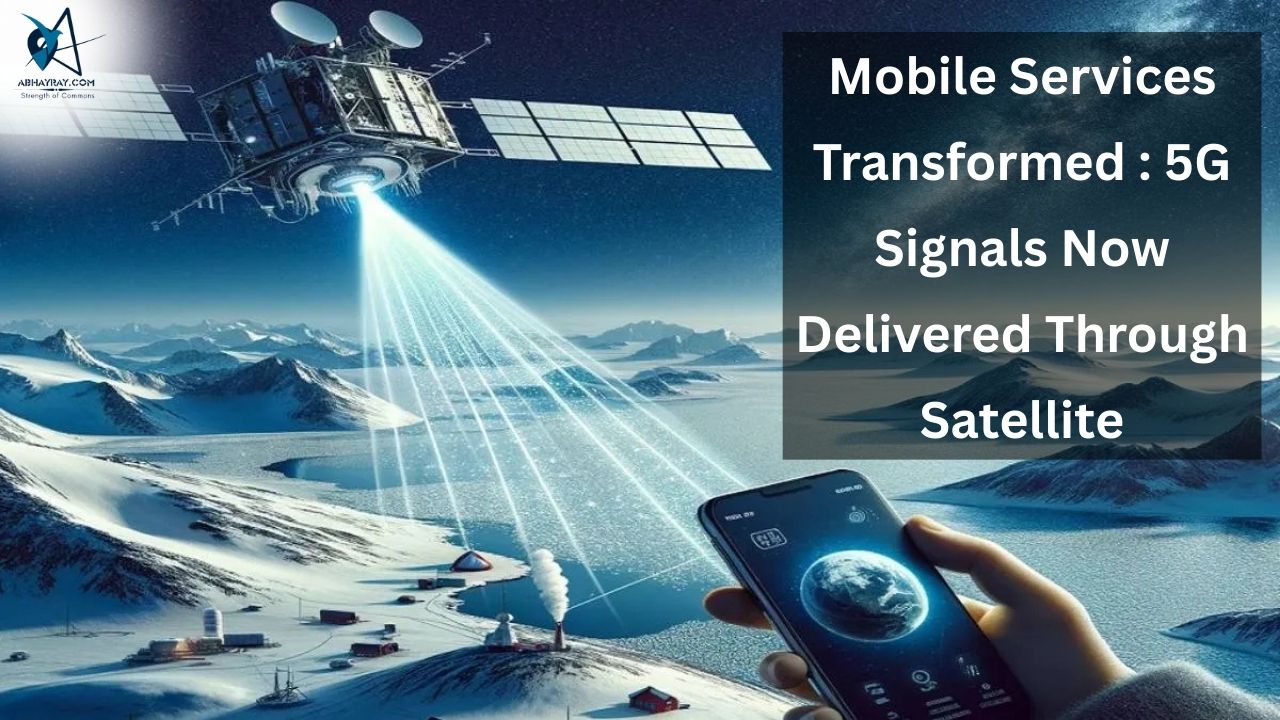Introduction
Preparations are underway to launch satellite internet services across India. In addition to the country’s two major telecom providers, Elon Musk’s Starlink and Amazon’s Kuiper are also in the game. Once they receive the necessary regulatory approvals, these companies will roll out satellite broadband services in India, ushering in a new era for mobile connectivity. With satellite technology, users will be able to access signals directly on their phones without the need for mobile towers. Many companies are currently conducting technology tests in pursuit of this goal.
A New Era of Mobile Connectivity
The advent of 5G technology has already started to revolutionize how we connect and communicate, offering faster speeds, lower latency, and more reliable connections. But what if the next step in mobile connectivity goes beyond traditional cell towers and directly taps into satellites orbiting above? This vision is rapidly becoming a reality, thanks to advancements in satellite technology and the rise of low Earth orbit (LEO) satellites. By harnessing the power of space-based infrastructure, we are on the verge of a mobile revolution that promises to expand connectivity, enhance user experiences, and transform industries. According to Verizon’s CEO, a new era in mobile services in America has begun. The pathway to connecting cellular networks to satellites has been paved. This service is expected to enable data transmission as well. Following the completion of satellite service testing, users will not only be able to send texts but also conduct video calls, participate in chats, and share files seamlessly. The introduction of satellite connectivity promises users a robust network, allowing calls and messages to go through without interruption.
Successful Testing
Successful testing has already taken place. Leading American telecom operator Verizon recently tried live video calls utilising the AST Space Mobile Bluebird satellite, a test that received the green light from the US Federal Communications Commission (FCC). Starlink also recently experimented with direct-to-cell technology, marking a significant achievement for American telecom firms. Reports indicate that five operational Bluebird satellites from AST SpaceMobile were activated for this trial, completing the testing for satellite connections. This testing included various applications, from full data services to video calls. Verizon claims its network extends to 99 percent of Americans, and with the satellite-to-device network, it will reach even those remote areas where installing traditional mobile towers is not feasible.
Redundancy and Reliability: Satellite networks can serve as a redundant and reliable communication link, enhancing the resilience of 5G networks. In the event of terrestrial network failures due to natural disasters or other disruptions, satellite connectivity can help maintain communication services.
Connectivity in Challenging Terrain: Satellites can provide connectivity in areas with challenging terrain, such as mountainous regions, deserts, or dense forests, where deploying terrestrial infrastructure is difficult.
The Benefits of Direct Satellite 5G for Remote Areas
Direct satellite 5G provides a transformative solution for remote and underserved regions, offering high-speed internet access without the need for extensive ground-based infrastructure. This technology brings several key benefits:
- Universal Connectivity: Satellite 5G enables global coverage, connecting even the most isolated locations—mountains, deserts, and oceans—where traditional cell towers cannot reach. It ensures that remote communities can access reliable, high-speed internet, reducing the digital divide.
- Emergency and Disaster Response: During natural disasters, ground networks often fail. Satellite 5G provides a resilient communication infrastructure, allowing emergency responders and affected residents to stay connected, ensuring faster relief and coordination.
- Affordable Access: Building traditional network infrastructure in remote areas can be costly. Satellite 5G lowers these costs, offering affordable internet access to underserved communities.
- Economic Growth: Reliable internet opens up new economic opportunities, from remote work to e-commerce, empowering local businesses and enabling growth in agriculture, education, and healthcare.
- Improved Healthcare and Education: Satellite 5G enables telemedicine and remote learning, providing access to essential services like medical consultations and online education, even in the most isolated regions.
Impact on Consumer Experience and Digital Ecosystems
The integration of 5G and satellite technology will significantly enhance consumer experience by providing seamless, high-speed connectivity anywhere, even in remote areas. Users will enjoy faster internet speeds, lower latency, and more reliable connections, improving activities like streaming, gaming, and video calls. This will also foster the growth of digital ecosystems, enabling advancements in IoT, smart cities, and autonomous systems. Consumers will benefit from increased accessibility to digital services, empowering remote work, education, and healthcare, while businesses can innovate with new, data-driven solutions on a global scale.
Conclusion
The world’s first 5G satellite connection marks a groundbreaking milestone in mobile communication, opening new possibilities for global connectivity. By seamlessly bridging terrestrial and satellite networks, this technology ensures faster, more reliable connections in remote areas and supports advanced applications like IoT, autonomous vehicles, and smart cities. This achievement signals the beginning of a new era, where mobile communication is truly global, enhancing user experience and driving digital transformation across industries.
GMICapitals.com RaysVeda.com GetMyStartup.com LawCanal.com GetMyIndia.com ZinCob.com Angeltors.com

